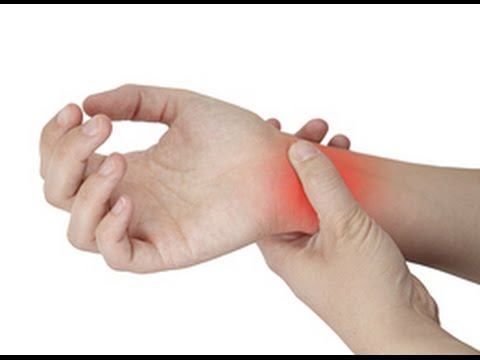 Spring into health with a new fitness plan! REAL FIT at EVERY AGE Save 30% on the cover price. Offer ends May1st. Use code SPRING30 at checkout.
Spring into health with a new fitness plan! REAL FIT at EVERY AGE Save 30% on the cover price. Offer ends May1st. Use code SPRING30 at checkout.
Have you or anyone you know had your workout challenged by a repetitive stress injury? Also known as an RSI, or an overuse injury, these fitness-based injuries are more common than we think. In 2002, over 20 million Americans received treatment for sports injuries, and risk of severity increases as we age. Interestingly enough, most sports injuries happen during practice, and the most likely sports to cause injuries are not the ones we might think of. Top 3 activities for injury include swimming, basketball, and bicycling.
So how can we avoid overuse of the same muscle groups while still following our dreams and pursuing our passions? Ask Serena Williams and she’ll tell you a long list of guidelines she follows, from cutting out the coffee to avoid dehydration to cross-training with lots of fitness and strength training.
Whether we aspire to be a star in our own sport of choice, or whether we just love what we do on a daily basis, the following is a list of 10 tips to help you steer clear of repetitive stress injury. Whether you’re the mother of an aspiring and dedicated young athlete or whether you yourself are a daily exerciser, these 10 suggestions go a long way to promote healthy bodies that can weather the strain of daily workouts and much-loved activities.
1 – CROSS TRAIN
The best way to avoid repetitive stress injuries is to cross train. Ideally you will have 1 or 2 other activities you enjoy and can pour your heart into even if they aren’t necessarily a part of your identity like your main sport is. If you love to play tennis, start up a yoga habit too. If your thing is martial arts, swimming a couple of days a week is a great habit. The key is to develop different muscle groups to keep your body from falling into bad habits with just one form of exercise. Are you a runner? Try a Pilates class
2 – AVOID DEHYDRATION
This means getting and staying hydrated. To break it down, it’s important to look at 3 aspects of hydration. Pre-hyration, re-hydration, and avoiding de-hydration. Pre-hydrating means a minimum of 16 ounces of water or electrolyte based beverages within 60 minutes of beginning an activity. Re-hydration starts during a workout and continues through the hours post-exercise. Avoiding de-hydration means staying away from too much caffeine and other nutrient sucking beverages, such as sugary sodas and highly processed energy drinks.
3 – GET AMPLE REST AND DOWN-TIME
It is as important to take days off as it is to have great training days. Muscle memory occurs on the off-days, as does integration of new information. New muscle tissue occurs through 2 energy cycles – the catabolic and anabolic. Your body needs workout time to build new muscle and rest time to break down old cellular material and remove toxins from the body. Proper sleep and down time are essential elements of physical efficiency and overall health.
4 – LISTEN TO YOUR BODY
Feeling fatigued? Craving an extra workout? Feel like an hour alone with your favorite prop (tennis racket, basket ball, surf board, heavy bag & gloves) is calling you away from a group class or team practice? While consistency is key, our bodies contain their own genius, and listening to them is often the key to optimal health and physical performance.
5 – STRETCH ON A REGULAR BASIS
Muscles require lengthening and release to continue to function optimally. Proper alignment in any sport requires lengthening through the areas that tend towards congestion and over-use. Besides this, stretching promotes energy flow through the acupuncture meridians, as well as ensuring that the cells that make up your muscles (output) and nerves (input/ output and overall responsiveness) get all of the hydration and nutrition they need.
6 – EAT RIGHT
A healthy body is far less prone to get injuries. Amino acids, proteins, saturated fat, and plenty of fruits and veggies are required to keep a body functioning athletically. Sugars and highly processed foods will only hinder muscle performance. All professional athletes know this – to properly fuel an active body we must eat well.
7 – STRENGTH TRAIN
In addition to cross training, strength training is an important part of exercising. During fitness training session we develop the building block our bodies need to execute proper technique on the street, court, bike or pool. Strengthening specific muscle groups with weights, boosting cardio performance, and stabilizing joints with proper muscle tone are all crucial to avoiding unnecessary injury.
8 – FOCUS ON PROPER ALIGNMENT
Activities like yoga, Pilates, tai chi, Klein Technique, Alexander Technique, Body-Mind Centering, and many other forms of movement focus on optimal alignment of the skeleton in motion. These techniques are valuable tools in both prevention and rehabilitation.
9 – DO NOT PRACTICE AT 100% EVERY DAY
Do you feel 100% energy every single day? No. It is the nature of all living beings to have ebbs & flows in our energy, and as athletes it is important to listen to our bodies. It is one thing to rally your best self, another altogether to push yourself past your resources and risk getting hurt. Huge growth can happen when we dial it back to 30-70% at 1-2 days/ week and practice the deeper work or hone in on specifics. You don’t have to blow yourself out to get a great training session in, and it’s best to vary your intensity to avoid strain and injury. Sometimes, less is more.
10 – IF FATIGUED, SIT IT OUT.
Sometimes even 30% is too much to give. When your body is tired, it is crucial to honor its need for rest. Techniques like gentle stretching, visualization and other practices to build mental focus and stamina are key in being well rounded. Most injuries happen when our bodies are fatigued and when our minds are not able to focus enough attention on a physical task. When we’re tired, we are not as present, and injuries can easily occur even in familiar settings.
Have you had a sports injury you want to tell me about? Comment below and let me know what’s worked for you in recovering or avoiding them. Join our mailing list to stay up to date on Real Fit Mama’s health & fitness offerings. If you haven’t already, like us on Facebook and Pinterest as well!
PAID ENDORSEMENT DISCLOSURE: In order for me to support my blogging activities, I may receive monetary compensation or other types of remuneration for my endorsement, recommendation, testimonial and/or link to any products or services from this blog.
